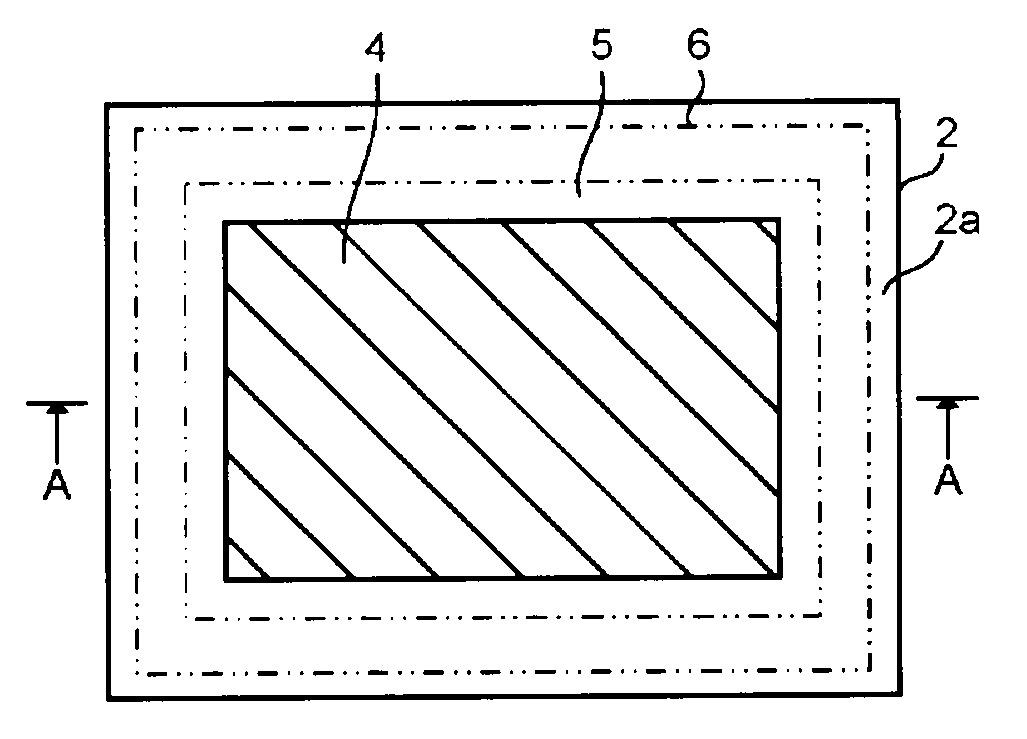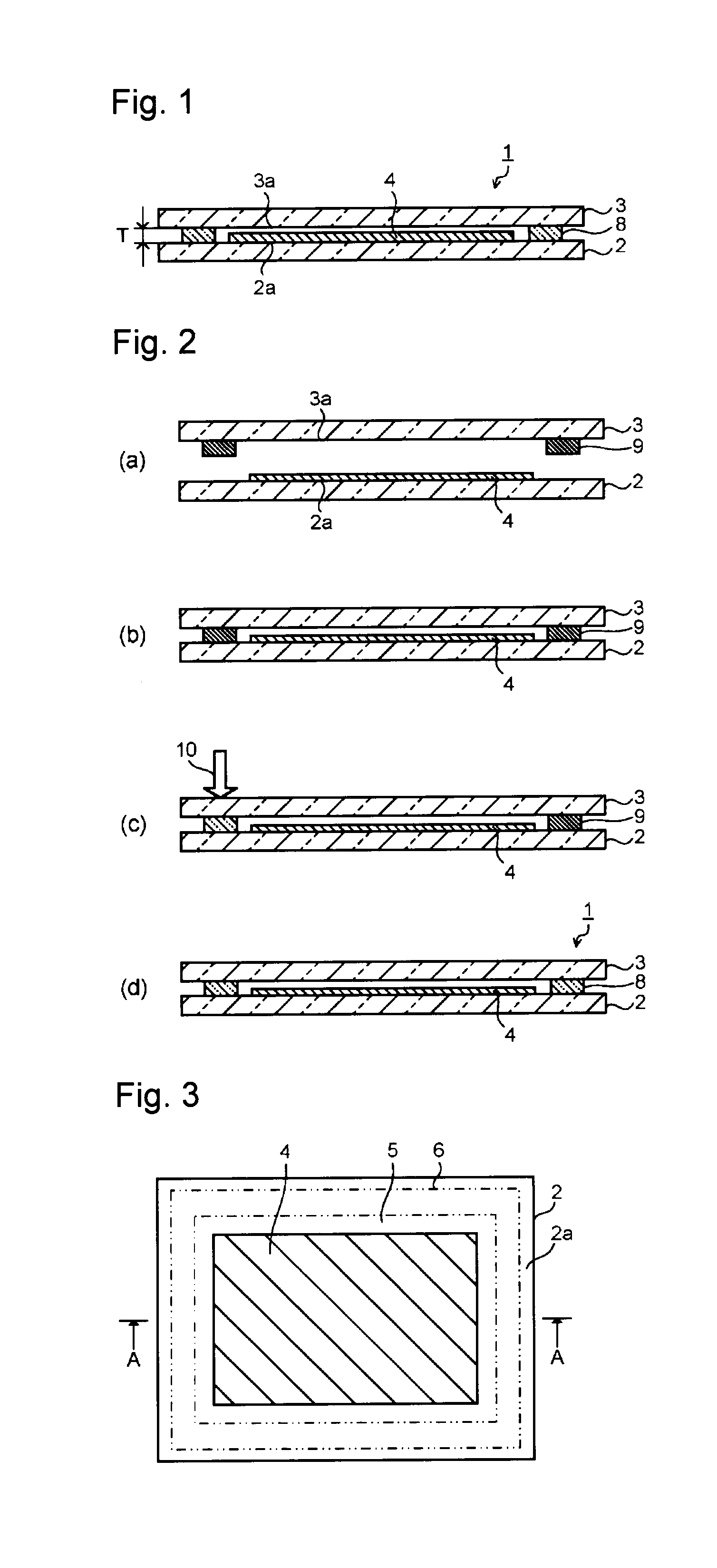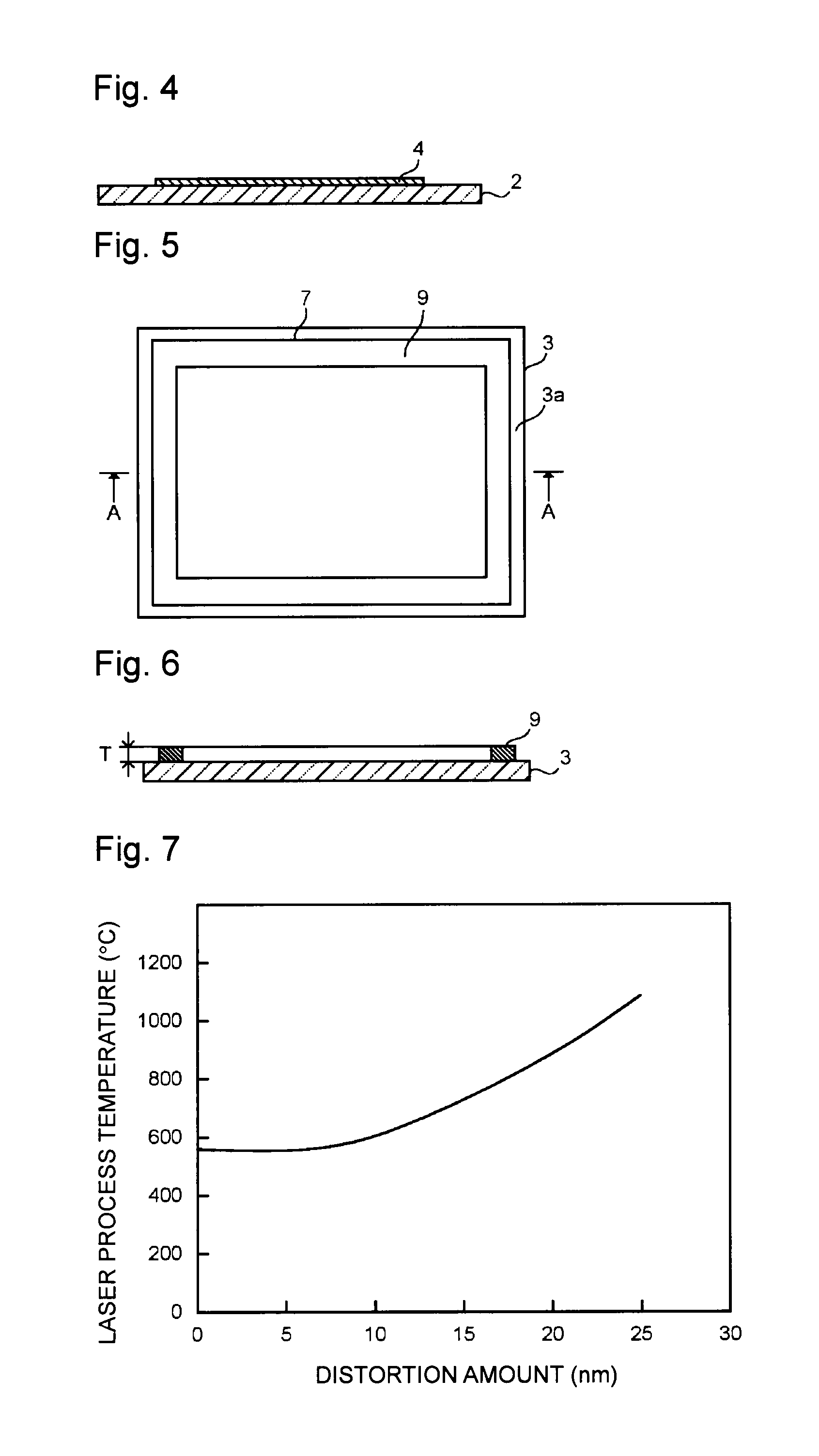Glass member provided with sealing material layer, electronic device using it and process for producing the electronic device
a technology of glass member and sealing material, which is applied in the manufacture of electric discharge tubes/lamps, electric apparatus casings/cabinets/drawers, instruments, etc., can solve the problems of deterioration of the properties of the electronic element portion of the oel element or the dye-sensitive solar cell, the difference in the thermal expansion coefficient between the glass substrate and the sealing glass, and the like. to achieve the effect of reducing the generation of e.g., high air tigh
- Summary
- Abstract
- Description
- Claims
- Application Information
AI Technical Summary
Benefits of technology
Problems solved by technology
Method used
Image
Examples
example 1
[0079]A bismuth type glass frit (softening point: 410° C.) having a composition of 83 mass % of Bi2O3, 5 mass % of B2O3, 11 mass % of ZnO and 1 mass % of Al2O3 and having an average particle size of 1.0 μm; a cordierite powder as a low-expansion filler; and a laser absorbent having a composition of Fe2O3—Cr2O3—MnO—Co2O3; were prepared. The cordierite powder being the low-expansion filler has a particle size distribution that D10 is 1.3 μm, D50 is 2.0 μm, D90 is 3.0 μm and Dmax is 4.6 μm, and has a specific surface area of 5.8 m2 / g. Further, the laser absorbent has a particle size distribution that D10 is 0.4 μm, D50 is 0.9 μm, D90 is 1.5 μm and Dmax is 2.8 μm, and has a specific surface area of 5.0 m2 / g. The specific surface areas of the cordierite powder and the laser absorbent were measured by using an BET specific surface area measurement apparatus (Macsorb HM model-1201, manufactured by Mountech Co., Ltd.). The measurement conditions were such that the adsorbent is nitrogen, the...
examples 2 to 10
[0084]The cordierite powder and the laser absorbent having the particles shapes shown in Tables 1 and 2 were mixed with a bismuth glass frit having the same composition as that of Example 1 at ratios shown in Tables 1 and 2, to prepare a glass material for sealing, and subsequently, they were mixed with vehicles in the same manner as Example 1 to prepare a sealing material paste. By using this sealing material paste, a sealing material layer was formed on a second glass substrate in the same manner as Example 1. The surface areas of the low-expansion filler and the laser absorbent in the glass material for sealing, the thermal expansion coefficient α1 of the sealing material layer, the difference (α1−α2) of the thermal expansion coefficient from the glass substrates, the thickness of the sealing material layer are as shown in Tables 1 and 2.
[0085]Next, the second glass substrate having the sealing material layer and a first glass substrate having an element region (region in which a...
examples 11 and 12
[0086]A laser absorbent having a particle shape shown in Table 3 was mixed with a bismuth glass frit having the same composition of that of Example 1 with the ratio shown in Table 3, to prepare a glass material for sealing, and subsequently, it was mixed with a vehicle in the same manner as Example 1, to prepare a sealing material paste. Here, no low-expansion filler was used. By using the sealing material paste, a sealing material layer was formed on the second glass substrate in the same manner as Example 1. The surface area of the laser absorbent in the glass material for sealing, the thermal expansion coefficient α1 of the sealing material layer, its difference from the thermal expansion coefficient of the glass substrates (α1−α2) and the thickness of the sealing material layer, are as shown in Table 3.
[0087]Next, the second glass substrate having the sealing material layer and a first glass substrate having an element region (region in which an OEL element is formed) were lamin...
PUM
 Login to View More
Login to View More Abstract
Description
Claims
Application Information
 Login to View More
Login to View More - R&D
- Intellectual Property
- Life Sciences
- Materials
- Tech Scout
- Unparalleled Data Quality
- Higher Quality Content
- 60% Fewer Hallucinations
Browse by: Latest US Patents, China's latest patents, Technical Efficacy Thesaurus, Application Domain, Technology Topic, Popular Technical Reports.
© 2025 PatSnap. All rights reserved.Legal|Privacy policy|Modern Slavery Act Transparency Statement|Sitemap|About US| Contact US: help@patsnap.com



